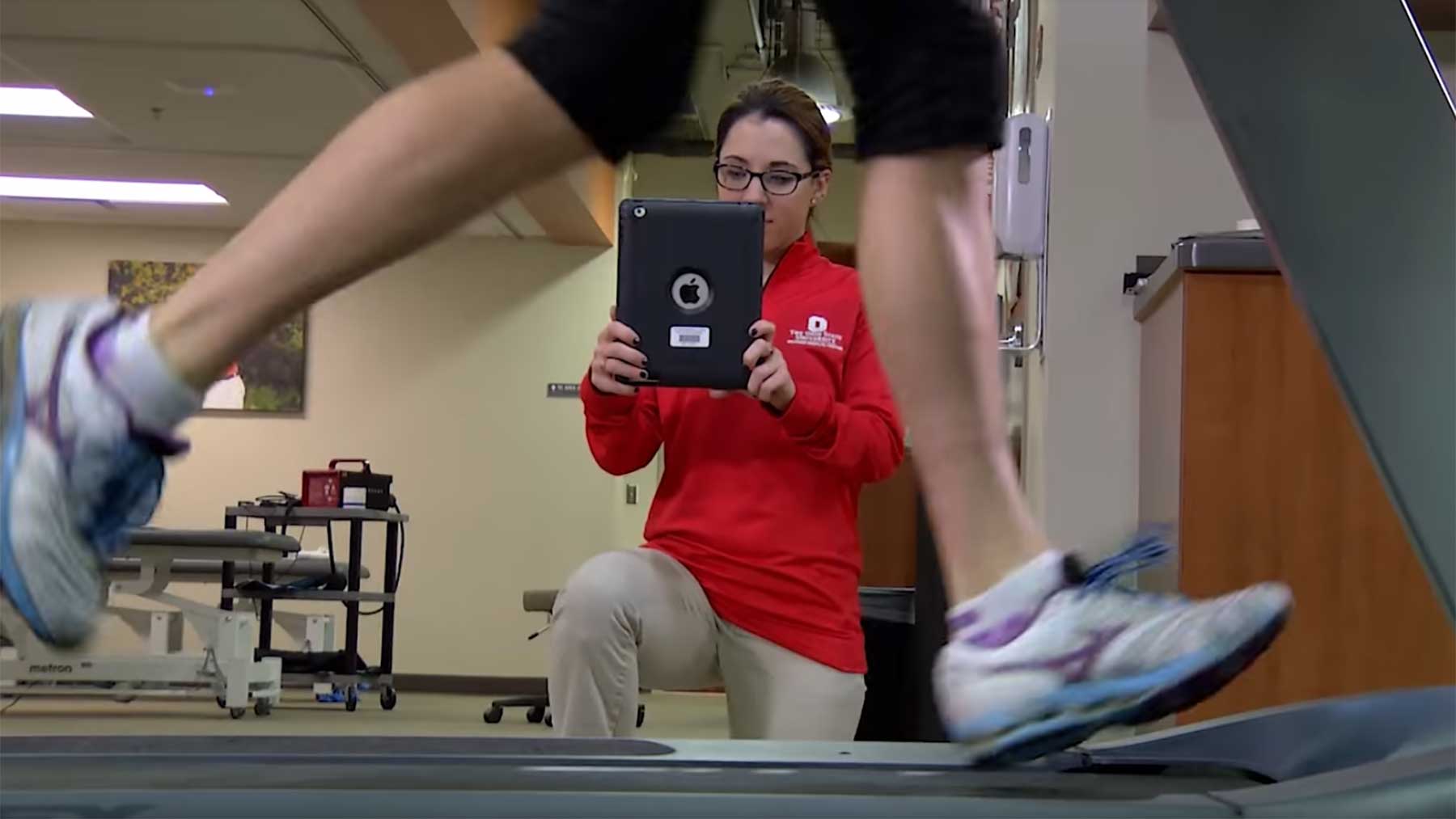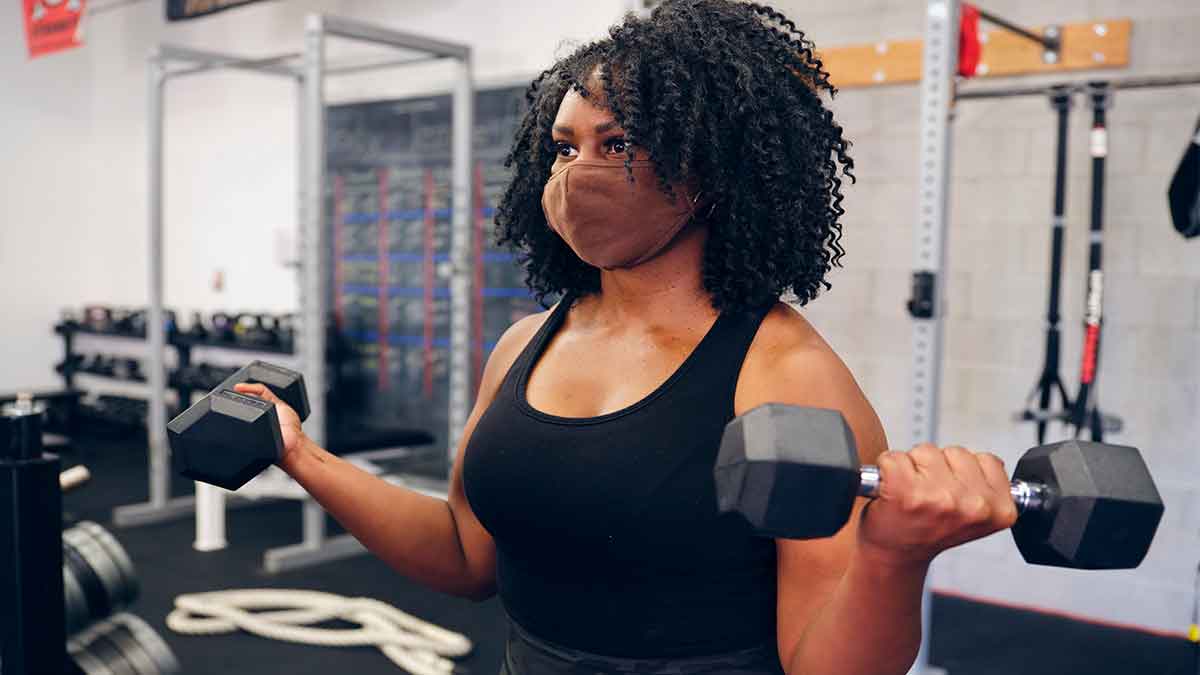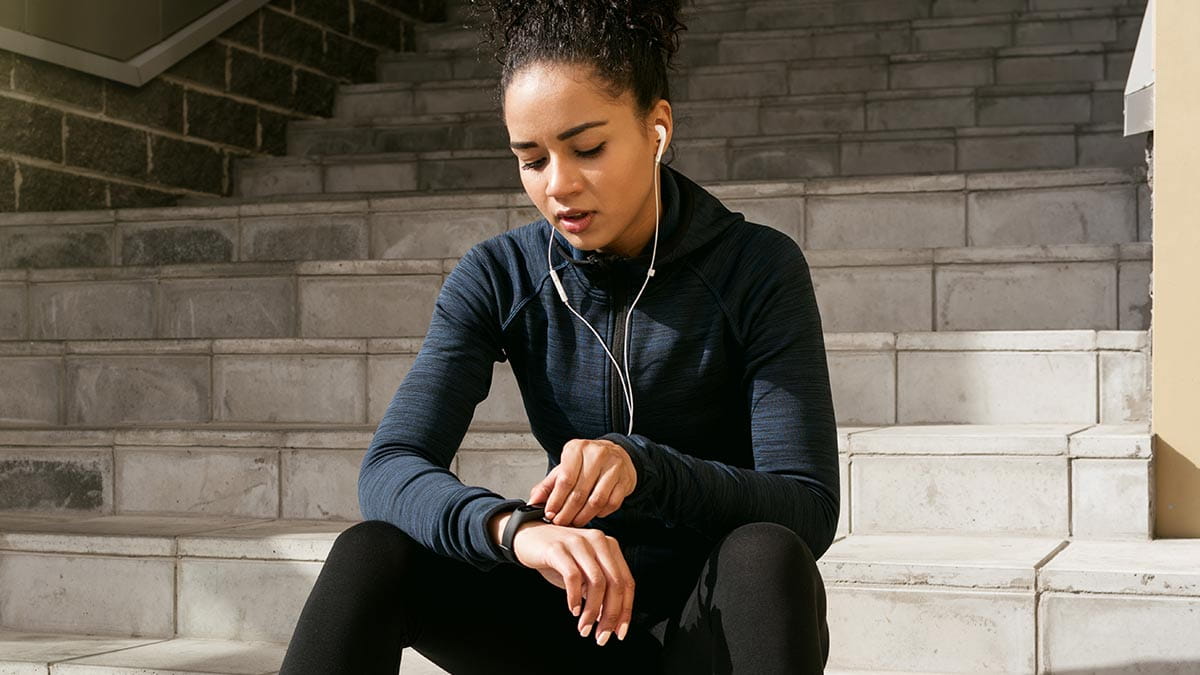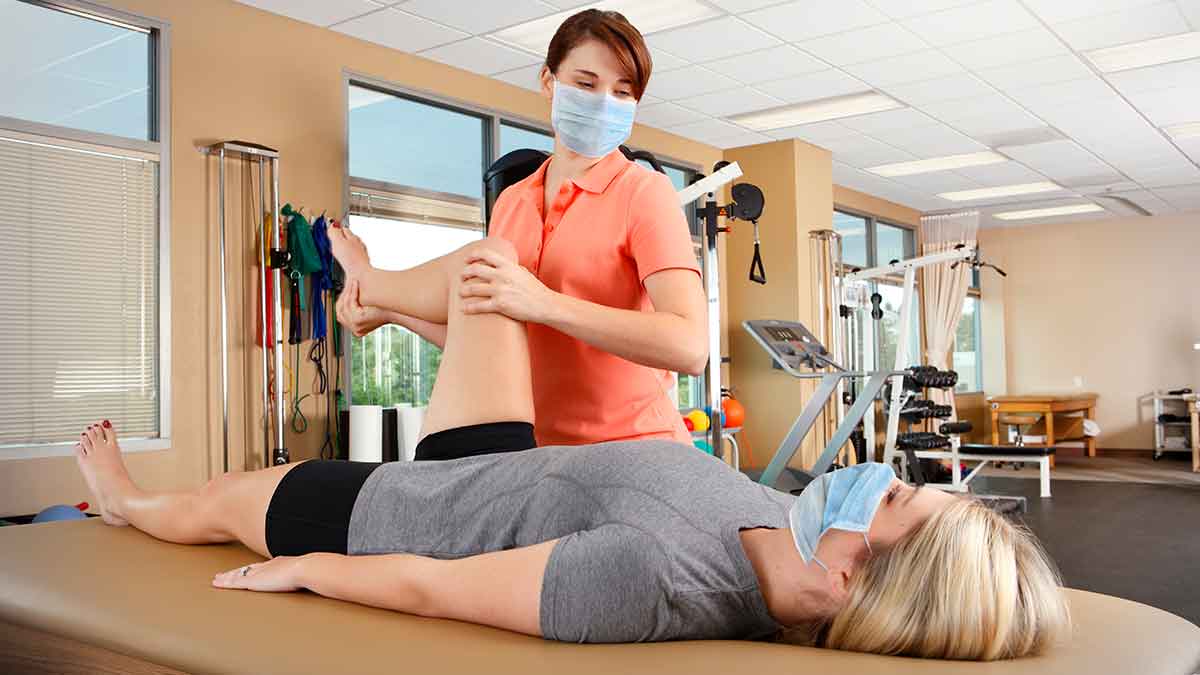What do you know about your running gait?

Going for a run? You’ll probably think about perfecting that playlist, grabbing a bottle of water and wearing the right clothing for the weather. Your running style – or gait – is likely the last thing on your mind.
Your running gait is how you run. It involves things like the length of your stride and your foot strike , which is how your foot hits the ground. Getting a running gait analysis with Ohio State Sports Medicine will give you important info about your running style, which can help you avoid injuries before they strike or help you recover faster if already battling back from an injury.
Melissa Gallatin, PT, AT, OCS, a physical therapist at Ohio State Sports Medicine, explains more about the importance of getting a running gait analysis and answers some of the commonly asked questions about the value of a running gait analysis:
What does a gait analysis measure?
Physical therapists take video of you running on a treadmill. They replay the video, slowing it down to evaluate several key areas:
- Stride length: This is the distance between where your feet hit the pavement.
- Foot strike: Your foot acts like a shock absorber every time it hits the pavement. This impacts your entire body. Different foot strike patterns create different forces in the lower extremity.
- Foot & ankle mechanics: If your foot isn’t hitting the ground and leaving the ground at the right angle, it cannot distribute the force of impact as you run. As a result, certain muscles and bones may be affected, leading to pain and injury.
- Leg alignment:This is where the knee is in relation to the hip and ankle and if misaligned can result in injuries in the lower extremity.
- Core stability: Too much trunk and leg movement can lead to knee, lower leg, ankle and foot injuries.
- Arms: Too much movement or asymmetrical arm swing may lead to lower body misalignment and/or low back pain.
What are most runners not doing correctly?
Gallatin says many runners who participate in the gait analysis do not realize they are not correctly activating their core or glute muscles while running.
Another common problem is the length of stride. Too long of a stride puts more forces on your joints and more weight on muscles and tendons.
“People tend to think in order run faster, you have to lengthen your stride. But in reality this over-striding increases your risk of injury,” explains Gallatin.
How does a gait analysis help you avoid injury?
The running gait analysis will give you key information about potential flaws in your running style and stride. Gallatin says the way to fix these issues can often be done by adjusting your cadence, or steps per minute.
She says elite runners usually strike the ground 180 times per minute, and recreational runners should strive for about 160+ steps per minute.
“If you have a history of injuries, increasing cadence by 5 to 10 percent can drastically decrease forces on your hips and knees,” says Gallatin.
Changing your running cadence probably won’t be easy. In fact, it will likely feel harder and less efficient, shares Gallatin. It may take six to eight weeks to make a higher cadence feel natural, but the end result is well worth it.
Who should get a running gait analysis?
Gallatin wants to dispel a myth that a running gait analysis is something that can only benefit elite runners. Recreational runners can see an increase in performance by following recommendations from a gait analysis and reduce their risk of injury.
“It’s all about efficiency. If we can make your running more efficient, there is a possibility you will run faster times.”
How much does a running gait analysis cost?
A running gait analysis is $125. If you are already injured and have a physician referral, this cost can be covered by your insurance. An entire analysis takes 60 to90 minutes to complete.





